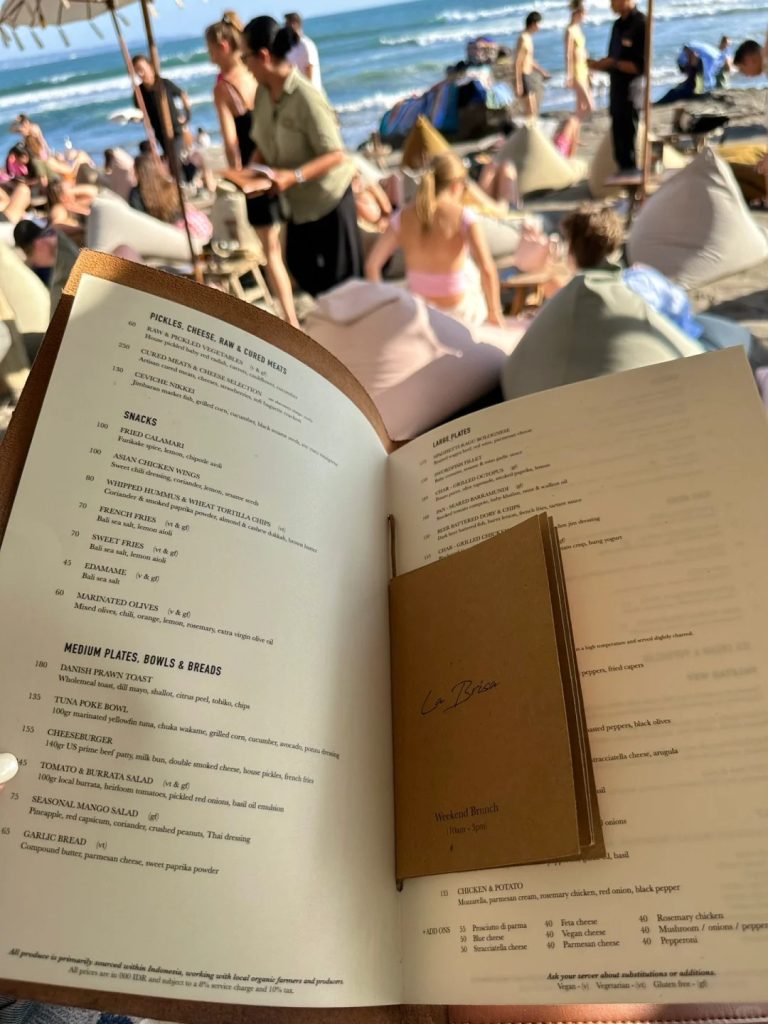Recently, a seed called ‘Bali’ took root in my heart and sprouted quickly. It all started by chance – while browsing videos, I happened to see a blogger’s travelogue about Bali.
In the video, the Uluwatu cliffs looked majestic and mysterious in the setting sun, and the waves mercilessly crashed against the rocks below, raising white spray.
At Jimbaran Beach, people stroll along the fine sand, leaving footprints behind them, while the distant horizon and sky blend seamlessly together to form a breathtaking landscape.
It was then that I decided: I must go to this fantastic island and embark on my own romantic adventure. So I began to prepare meticulously. Below, I will share my travel guide.
Why Bali?
The scenery of Bali is a natural masterpiece. Endless emerald-coloured terraced fields glitter in the sun, like a symphony of green.

The beaches have soft, cloud-like sand, and walking on them feels like strolling on the clouds; the clear water changes from light emerald to deep sapphire.
The towering mountains are often shrouded in mist, adding a touch of mystery, and the lush rainforest is home to rare plants and animals, like a hidden green kingdom.
Unique culture
Bali’s unique Hindu culture is extremely attractive. Exquisite temples are dotted everywhere, with intricate mythological stories carved on the walls.
Traditional ceremonies are full of vitality and solemnity, and the locals attend in full dress, exuding the power of their faith. The artistic spirit of the island is fully reflected in paintings, wood carvings and dances – each piece tells the legendary story of Bali.
A wealth of diverse experiences
Whether you crave excitement or relaxation, Bali has it all. Thrill-seekers can surf or dive into an underwater wonderland and swim with colourful fish and coral reefs. Those seeking tranquillity can enjoy a massage at one of the world-class spas to relieve stress and rejuvenate.
Best time to travel
Season breakdown
- Dry season (April to September): Ideal for outdoor activities – clear skies, low humidity and calm seas make it perfect for swimming, sunbathing and water sports.
- Rainy season (October to March): Less crowded and cheaper, but with the occasional downpour, which creates a lush, tranquil landscape.
- Transition season (November to March): Sun and rain alternate, making cultural exploration and peaceful evenings a good match.
- High season (July to August): Crowded with tourists, vibrant nightlife, but higher prices and crowded attractions.
- Low season (January to March, November): Discounted accommodation and activities, but windier and wetter.
For budget-conscious travellers like me, February and October are the best options – lower prices, fewer crowds and pleasant weather. Setting up price alerts on your travel app can help you grab a bargain at the last minute!
Getting to Bali
From Melbourne
- Flight time: about 6 hours (4,400 km), direct flight.
- Daily flights: 8 direct flights (Melbourne to Denpasar) operated by Qantas on Boeing 737s.
- Tip: Choose an early morning flight to make the most of your first day.
From elsewhere
- Sydney: about 6.25 hours (4600 km).
- USA: no direct flights; longer journey with stopover.
Eight days allow you to relax on the beach, explore cultural gems such as Uluwatu Temple and Ubud Palace, and take in the magic of Bali at your own pace.
Costs and visas
An affordable trip
- Accommodation: From hostels to luxury resorts.
- Food: Street food (‘warungs’) to mid-range restaurants – delicious and affordable.
- Activities: Temple visits, trekking through the rice terraces and cooking classes won’t cost you much.
Visa details
- Visa on arrival (VOA): Available for many countries (including US citizens), costs around 50 AUD (500,000 IDR) and is valid for 30 days (extendable).
- Requirements: passport must be valid for at least 6 months and have at least 2 blank pages.
My suitcase is almost packed and I can’t wait to experience the Balinese way of life. I hope this guide has inspired you to go on an adventure to Bali!
